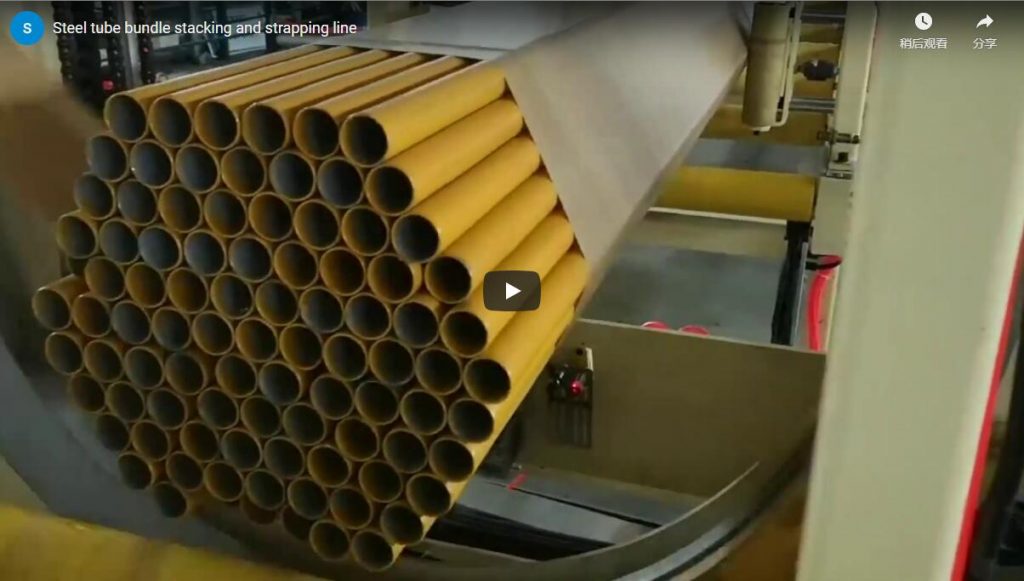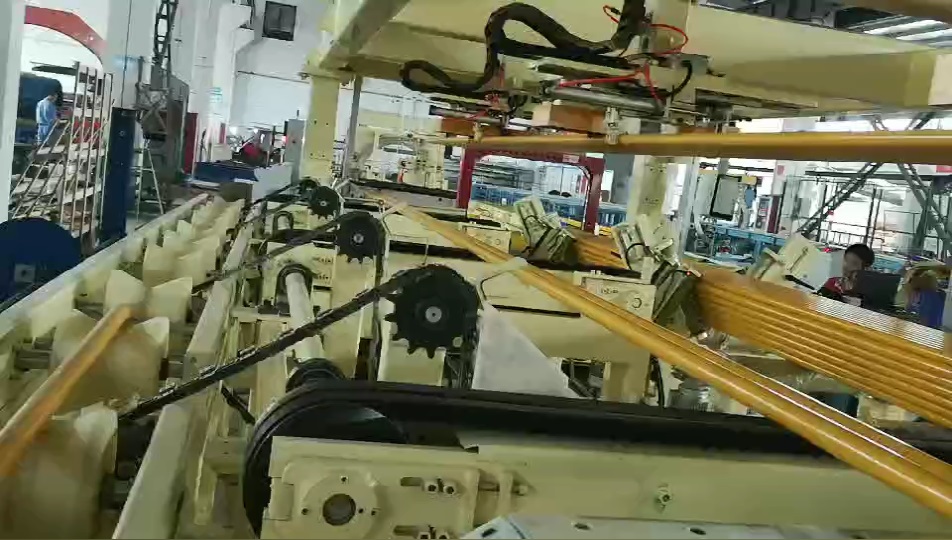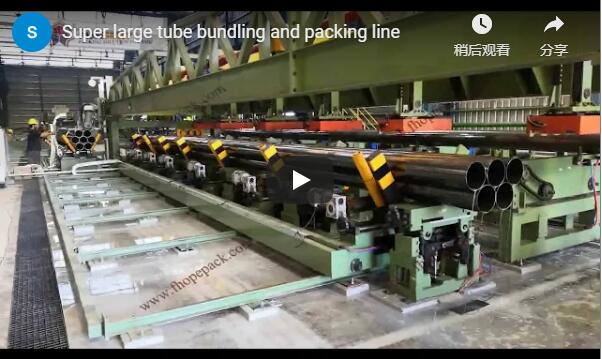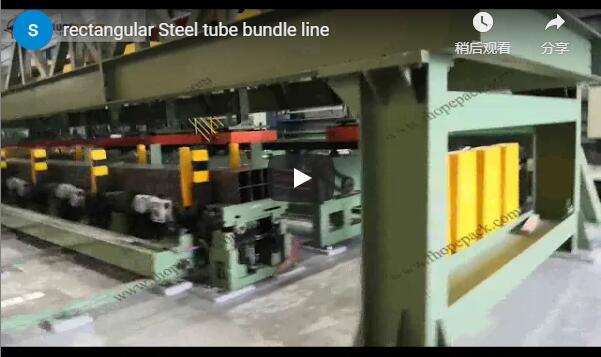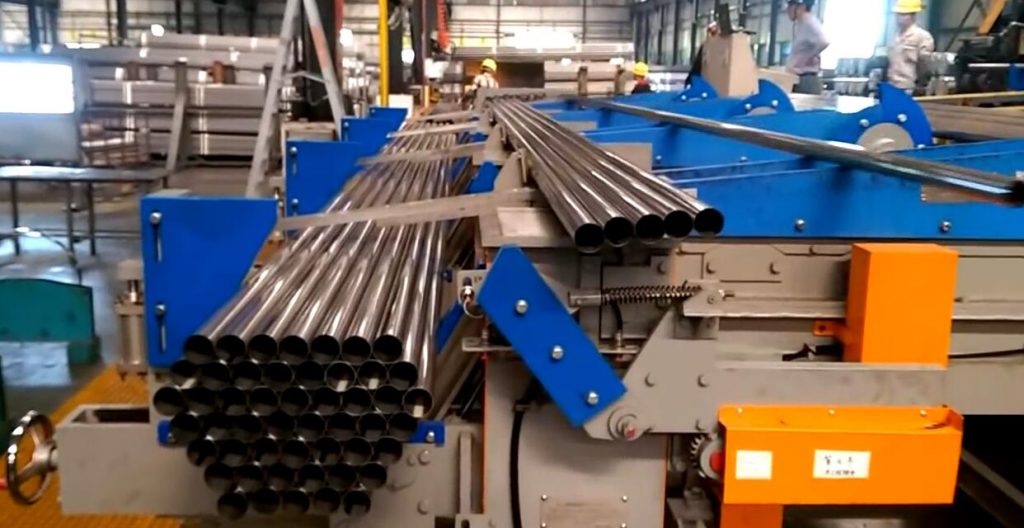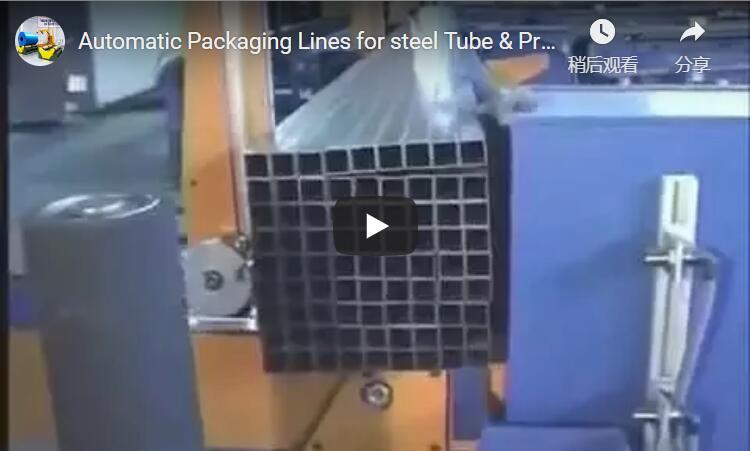Streamlining Steel Tube Logistics: A Deep Dive into Hexagon and Square Bundling Machines
The efficient handling, bundling, and packaging of steel tubes are critical operations in manufacturing facilities and distribution centers. Manual processes are often slow, labor-intensive, inconsistent, and pose potential safety risks. Automated solutions like the steel tube bundler, specifically designed for creating precise hexagon and square bundles, offer a significant upgrade in efficiency, safety, and quality. This article delves into the technical aspects, design considerations, components, and operational benefits of these essential machines.
1. The Core Challenge: Handling and Bundling Steel Tubes Effectively
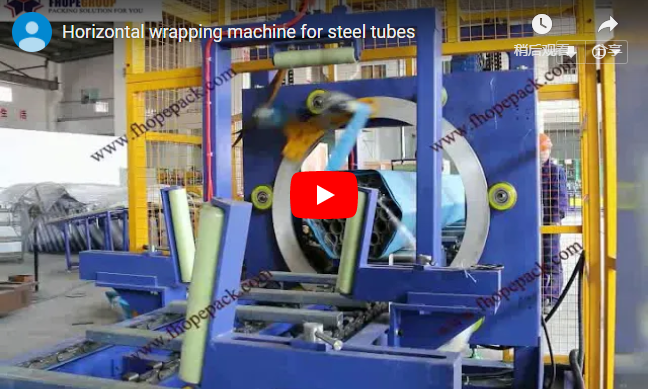
Manually bundling steel tubes presents several challenges:
- Inconsistency: Achieving uniform bundle shapes (hexagon or square) and tightness is difficult manually, impacting storage density and transport stability.
- Low Efficiency: Manual bundling is time-consuming, creating bottlenecks in the production or logistics chain.
- Labor Costs: Significant manpower is required for counting, arranging, and securing tubes.
- Safety Concerns: Handling heavy tubes manually increases the risk of worker injury.
- Potential Damage: Improper handling can lead to scratches, dents, or deformation of the tubes.
Automated steel tube bundlers directly address these pain points by mechanizing the counting, arranging, and initial securing process.
2. Introducing the Automated Steel Tube Bundler: Functionality and Scope
An automated steel tube bundler is an industrial machine engineered to receive individual steel, copper, or stainless steel tubes, count them accurately, arrange them into a pre-defined configuration (typically hexagonal or square), and prepare them for the final strapping or packaging stage. These machines form the heart of many modern automatic pipe packing lines.
FHOPE provides a range of such industrial pipe and tube handling equipment, integrating bundling with subsequent processes like strapping, packaging, and stacking for a seamless workflow.
3. Design Philosophy and Key Structural Components
The design of a robust steel tube bundler prioritizes durability, precision, speed, and operator safety. Key components typically include:
- Infeed Conveyor System: Often utilizing driven rollers or chain conveyors to reliably transport tubes from the production line or staging area into the bundler. Sensors detect incoming tubes.
- Tube Counting & Accumulation: Precise sensors (e.g., photoelectric or laser) count the tubes. An accumulation section gathers the required number of tubes for a single bundle before formation.
- Bundle Forming Mechanism: This is the core of the machine. It uses pneumatically or hydraulically actuated arms, guides, or paddles to carefully arrange the accumulated tubes into the desired hexagon or square shape. The design ensures tight packing without damaging the tubes.
- Pre-Tightening/Holding: Once formed, the bundle is often held securely in place, sometimes with light pre-tightening, ready for transfer to the strapping station.
- Integration with Strapping Unit: Bundlers are usually designed to work seamlessly with automatic strapping machines (using steel or PET straps) which apply the final, secure strapping around the formed bundle.
- Outfeed System: Conveyors or transfer mechanisms move the completed bundle downstream for weighing, marking, wrapping, or stacking.
- Control System (PLC & HMI): A Programmable Logic Controller (PLC) manages the machine's sequence, timing, and functions. A Human-Machine Interface (HMI), typically a touchscreen panel, allows operators to set parameters (tube count, bundle shape, dimensions), monitor status, and troubleshoot issues.
4. Key Technical Specifications and Performance Data
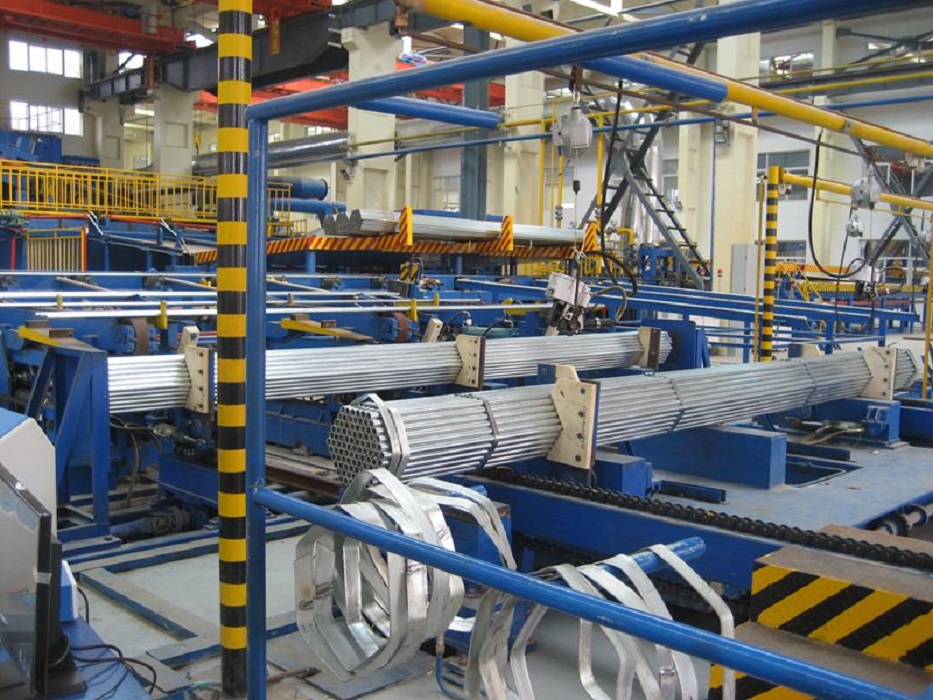
While exact specifications vary by model and manufacturer, typical technical parameters for steel tube bundlers include:
- Tube Type Compatibility: Steel (carbon, alloy), Stainless Steel, Copper, Aluminum tubes.
- Tube Shape: Primarily Round tubes; some designs might accommodate square/rectangular profiles.
- Bundle Shapes: Hexagonal (most common for round tubes), Square.
-
Technical Data Comparison (Typical Ranges): Parameter Typical Range/Value Notes Tube Diameter 10 mm – 150 mm (0.4" – 6") Wider ranges available for specialized machines. Tube Length 3 m – 12 m (10 ft – 40 ft) Custom lengths often possible. Bundle Weight Up to 5000 kg (11,000 lbs) Depends heavily on machine size and structure. Max Tubes per Bundle Varies by diameter and bundle shape Calculated by control system or preset. Cycle Time 30 – 90 seconds per bundle Influenced by tube count, length, and strapping. Forming Actuation Pneumatic / Hydraulic Hydraulic for heavier loads/larger bundles. Control System PLC (e.g., Siemens, Allen-Bradley) With Touchscreen HMI. Power Requirements 380V/480V, 3-Phase, 50/60Hz Specifics depend on drives and hydraulics.
5. Hexagon vs. Square Bundles: Practical Considerations
The choice between hexagonal and square bundles often depends on the application and downstream logistics:
- Hexagonal Bundles:
- Pros: Offer the highest packing density for round tubes, inherently stable structure, widely accepted industry standard.
- Cons: Can be slightly more complex to form perfectly, stacking might require specific dunnage.
- Square Bundles:
- Pros: Simple geometry, potentially easier to stack directly, may simplify the forming mechanism slightly.
- Cons: Less space-efficient for round tubes compared to hexagonal, might be less stable unless strapped tightly.
The bundler's control system allows easy selection and setup for the desired bundle configuration.
6. Operational Workflow and User Experience
From an operator's standpoint, interacting with a modern automated tube bundler is typically straightforward:
- Setup: Using the HMI, the operator selects the tube diameter, desired bundle shape (hex/square), and target tube count (or bundle dimension).
- Operation: Tubes are fed onto the infeed conveyor. The machine automatically counts, accumulates, and forms the bundle.
- Strapping Interface: The formed bundle is presented to the integrated strapping machine for automatic strapping.
- Discharge: The completed, strapped bundle is moved onto the outfeed conveyor.
- Monitoring: The operator monitors the process via the HMI, receiving alerts for low strap levels, material jams, or other issues.
Emphasis is placed on safety features like emergency stops, physical guarding, light curtains, and intuitive controls to ensure a safe working environment. Maintenance is also considered in the design, with accessible components for lubrication and inspection.
7. Integration within the Complete Pipe Packing Line
The steel tube bundler rarely operates in isolation. It's a key module within a larger automatic pipe packing line. This line can include:
- Upstream: Connection to tube mill output, cutting lines, or threading/finishing stations.
- Bundling: The core process described here.
- Strapping: Automatic application of steel or PET straps.
- Weighing: In-line scales to record bundle weight.
- Marking/Labeling: Applying identification marks or labels.
- Wrapping: Optional stretch wrapping for added protection.
- Stacking: Automated systems to stack bundles for storage or transport.
FHOPE specializes in designing and implementing these comprehensive pipe handling equipment solutions, ensuring seamless integration between modules like the tube bundling (pipe bundling) machine and other processes such as steel pipe strapping, tube packaging, and stacking.
8. Summary of Advantages
Investing in an automated steel tube bundler for hexagon and square bundles provides tangible benefits:
- Increased Throughput: Significantly faster bundling compared to manual methods.
- Consistent Quality: Uniform, tightly packed bundles every time.
- Reduced Labor Costs: Frees up personnel for higher-value tasks.
- Enhanced Worker Safety: Eliminates manual handling risks associated with heavy tubes.
- Minimized Product Damage: Gentle, controlled handling prevents scratches and deformation.
- Optimized Logistics: Standardized bundles improve storage density and transport stability.
- Process Integration: Seamless connection within automated packing lines.
Conclusion
Automated steel tube bundlers are indispensable assets for modern tube manufacturers and processors seeking efficiency, consistency, and safety. By precisely forming hexagonal or square bundles, these machines streamline handling, reduce costs, and prepare products optimally for storage and shipment. Understanding their technical specifications, design features, and operational workflow highlights their crucial role in optimizing the entire pipe logistics chain. Companies like FHOPE provide the expertise and equipment to integrate these bundlers effectively into comprehensive automated packaging solutions.

